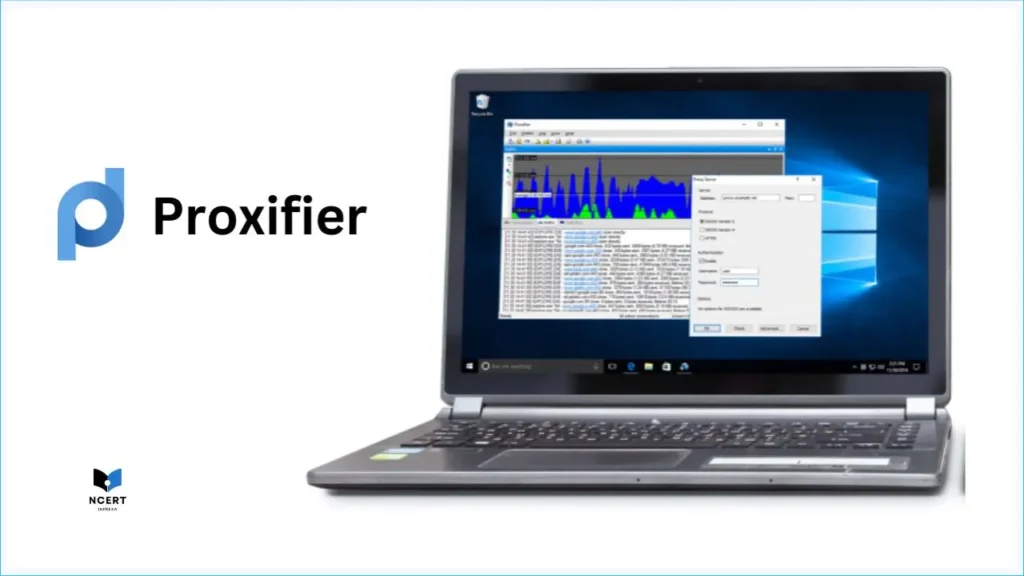Ever thought about owning a petrol pump dealership in India? With India now the world’s second-largest oil consumer – and expected to overtake the United States as the top fuel consumer by 2027 – the demand for petroleum products is rising.
Naturally, this growing demand has also led to an increase in petrol pump dealerships across the country.
In this article, I’ll walk you through everything you need to know – from how the bidding process works, what it costs, and what your real chances are of winning a dealership bid in India.
What does it mean by a Petrol pump dealership?
A petrol pump dealership is a business license given by an oil company (like Indian Oil, HPCL, or BPCL) to a person or group to sell petrol, diesel, and other fuel products. The dealer manages daily operations, like fuel supply, staff, and customer service, and earns commission on sales.
For Example, if Indian Oil gives you permission to open a fuel station on your land, you’re now their dealer. You’ll get fuel from Indian Oil and sell it under their brand to customers.
The procedure to set up a petrol pump dealership in India (Quick Guide)
Setting up a petrol pump dealership in India can be a rewarding business, but it involves several steps and legal clearances. Here’s a simplified quick guide:
- Check Advertisement: Watch out for dealership advertisements from oil companies like Indian Oil, HPCL, or BPCL on their official websites or in newspapers.
- Apply: Apply online or offline as instructed. To apply for a dealership with Indian Oil, Bharat Petroleum, or HP, you can visit the official Dealer Chayan Portal.
- Document Submission & Verification: Submit the required documents (identity proof, land documents, financial credentials, etc.). These are then verified to check your eligibility.
- Draw of Lots or Bidding: If eligible, you may either be selected through a draw of lots (for regular/dealer-owned outlets) or may have to participate in a bidding process (for certain locations).
- Pay Security Deposit: After selection, pay the necessary security deposit and sign the agreement with the oil company.
- Obtain Licenses & NOCs: Secure all necessary permissions and NOCs – like land conversion (if needed), explosive license, environmental clearance, fire safety approval, etc.
- Site Development: Construct the fuel station according to the company’s guidelines – including layout, canopy, office room, toilets, and driveway.
- Install Equipment: Set up fuel dispensers, storage tanks, automation systems, and safety equipment as approved by the oil company.
- Training & Inauguration: Complete mandatory training provided by the oil company. After final inspection and approval, you can start operations.
The Total Estimated Cost of Setting Up a Petrol Pump in India (Open Category)
Setting up a petrol pump dealership in India involves a considerable investment. The total cost typically ranges between ₹50 lakhs to ₹1.5 crores, depending on factors like location, land cost, size of the outlet, and facilities provided.
Below is an approximate cost breakdown for a Regular Retail Outlet (RO) under the Open Category:
| Particulars | Estimated Cost (INR) |
|---|---|
| Land (1000–2000 sq. m) + Site Development | ₹50,00,000 |
| Application Fee | ₹10,000 |
| License Fees including GST (explosive, fire, etc.) | ₹2,00,000 |
| Bidding Amount (Non-refundable) | ₹15,00,000 |
| Security Deposit (Open Category) | ₹5,00,000 |
| Equipment & Accessories (Compressor, water cooler, etc.) | ₹10,00,000 |
| Working Capital / Operating Liquidity | ₹20,00,000 |
| Total Estimated Investment | ₹1,02,10,000 |
Note:
- Land cost may vary significantly depending on location (urban vs rural).
- The bidding amount and security deposit vary based on the oil company and dealership category.
- Costs may increase if automation systems and high-end infrastructure are included.
Infrastructural Facilities Required to Open a Petrol Pump: Data from the above table
To set up a petrol pump in India, certain basic infrastructure is necessary:
- A developed plot of land with proper boundaries is required.
- Storage tanks, fuel dispensing units, automation systems, safety signboards, and other standard equipment must be installed.
- Basic construction like a sales office, store room, toilet, electrical room, water connection, and yard lighting must be in place.
- A generator or inverter shall be arranged to ensure power backup.
- A compressor with an electronic air gauge (as specified by the Oil Marketing Company) is needed for air filling services.
- A proper driveway is required for the smooth movement of vehicles.
- A canopy must be constructed over the dispensing area, as per company specifications.
- Customer facilities like clean drinking water, neat and clean toilets, and a phone for emergency use must also be provided.
India is one of the most populous countries in the world, with over 1.3 billion people. With so many people, it is no surprise that there are a lot of petrol pump dealerships in India. There are over 2,500 petrol pump dealerships in India alone! That’s a lot of competition for bids!
Profit Margin and Challenges
Is the business profitable? This is one of the most frequently asked questions by people who are new and want to open a petrol pump. They often approach me for my experience in the sector. Allow me to share a few of my experiences that might help give you a clearer idea.
A petrol pump dealership can be profitable, but it depends on various real-world factors. My uncle runs two petrol pumps in Madhya Pradesh, and from what I’ve seen closely, the business isn’t as easy as it looks.
Location matters the most. One of his pumps on a main highway near Rewa (City) does better than the other one in a rural area (Devtalab), simply because of higher vehicle traffic. Profit margins on petrol and diesel are not very high – usually 2.5% to 4% per liter sold as per Indian Oil’s current commission model. So, the key to profit is volume – the more litres you sell daily, the more income you generate.
There are also rising costs to manage: staff salaries, maintenance, electricity bills (especially if there’s no solar or good power supply), and the cost of keeping digital systems updated. On top of that, competition is tough – especially when new pumps open within a few kilometers. My uncle had to offer free air filling and a clean restroom just to retain regular customers.
Also, the dealership has to strictly follow environmental and safety norms, which often require investment in infrastructure like vapor recovery systems and leak-proof tanks.
So yes, the business can be profitable, but only when managed smartly, in the right location, with good service, and high daily fuel sales. It’s not a passive business – you have to be actively involved.
Is there any Petrol Pump Dealership Advertisement for 2025?
As of now, the official Petrol Pump Dealer Chayan portal (used by Indian Oil, HPCL, and BPCL) has not released any new dealership advertisements for 2025. The last major advertisement cycle was closed in November 2023. For future openings, you should regularly check the official Petrol Pump “Dealer Chayan Portal” or Bookmark this page for future notifications.
Please note: “Dealer Chayan portal” does not include private companies like Reliance or Shell – they announce dealerships separately on their own websites.
How to check a petrol pump dealership for Indian Oil, HPCL, and BPCL
- Visit official oil company websites: https://www.petrolpumpdealerchayan.in
- On the left side of the screen, navigate to the latest Advertisement Section, like for this year “Advertisement 2025”. Click on that, and you will be redirected to the Advertisement page
- On the next page, navigate to the “Latest Updates” section and choose the advisement related to your State/Province. A new page will show you the details like the oil company name that has published the advertisement, the State Name, the Opening, and the Last Date of application. The page also provides some crucial details related to the new dealership, like its Region, District, Location Description, Type of RO, Mode of Selection, Category Name, Status, etc. Here you can also filter the information by selecting your district, Type of RO, mode of selection, or Category Name.
- Click on View Advertisement Details and collect the information. You must also download the Brochure for selection of retail outlet dealers for guidelines, eligibility criteria, and requirements. This is one of the most important documents you must read before applying for a Petrol Pump Dealership in India.
Leading Petrol Pump Dealership Providers in India
Here are four major oil companies in India that are known for offering petrol pump dealership opportunities:
- Indian Oil.
- Bharat Petroleum.
- Hindustan Petroleum (HP).
- Jio BP (formerly Reliance Petroleum).
List of Documents required
Below are the documents required if someone wants to open a petrol pump dealership in India –
- Aadhaar Card.
- PAN Card.
- 10th Marksheet.
- ITR details (If any).
- GST Registration.
- Bank passbook.
- Land ownership-related records Eg. Khasra, Patta, etc.
- NOC from various departments like the Forest Department, Fire Department, Excise Department, Municipalities or Local authorities, and so on.
Eligibility Criteria
Before you can apply to become a petrol pump dealer, you first need to meet certain eligibility criteria mentioned below:
| Citizenship | He should be an Indian |
| Residential status | Resident of India |
| Age | Minimum 21 and Maximum 60 |
| Educational qualification | Passed Minimum 10th |
| Land ownership | Applicant should own land or have taken on lease for min 30 years |
Land Requirement for Petrol Pump Dealership in India
To open a petrol pump in India, you need a commercially approved land plot, either owned or leased. The land should be free from legal disputes, not located in restricted zones like wetlands or near wildlife sanctuaries.
As per official information, the required plot size for a petrol pump dealership is between 1000 to 2000 square meters, and this range depends on the location and the expected traffic.
Application Charges
The application fee depends on the type of outlet (Regular or Rural) and reservation category:
Fee for Regular ROs):
| SC/ST Category | ₹3,000 |
| OBC Category | ₹5,000 |
| Other Categories | ₹10,000 |
Fee for Rural ROs:
| SC/ST Category | ₹2,500 |
| OBC Category | ₹4,000 |
| Other Categories | ₹8,000 |
Note: All application fees are non-refundable.
License Fee for Petrol Pump Dealership
To operate a petrol pump, you must pay a license fee based on the amount of fuel sold. The fee varies by ownership type:
For Corporation-Owned Sites (A/CC sites):
| Petrol | ₹472.77 per KL |
| Diesel | ₹393.97 per KL |
For Dealer-Owned Sites (B/DC sites):
| Petrol | ₹233.45 per KL |
| Diesel | ₹194.54 per KL |
Note: All fees include GST and may change over time.
📌 Important Note:
If you face any issues while applying through the Dealer Chayan Portal – such as the portal not working, queries not being answered, or technical errors — you can raise a complaint through the PG Portal (Public Grievance Portal).
How to File a Grievance on the PG Portal
- Visit: https://pgportal.gov.in
- Click on “Lodge Public Grievance”
- Select the Ministry/Department as Petroleum and Natural Gas
- Fill in your details and describe the issue clearly
- Submit the form and note down your grievance ID for tracking
You can also check the status later under “View Status” using your ID.




